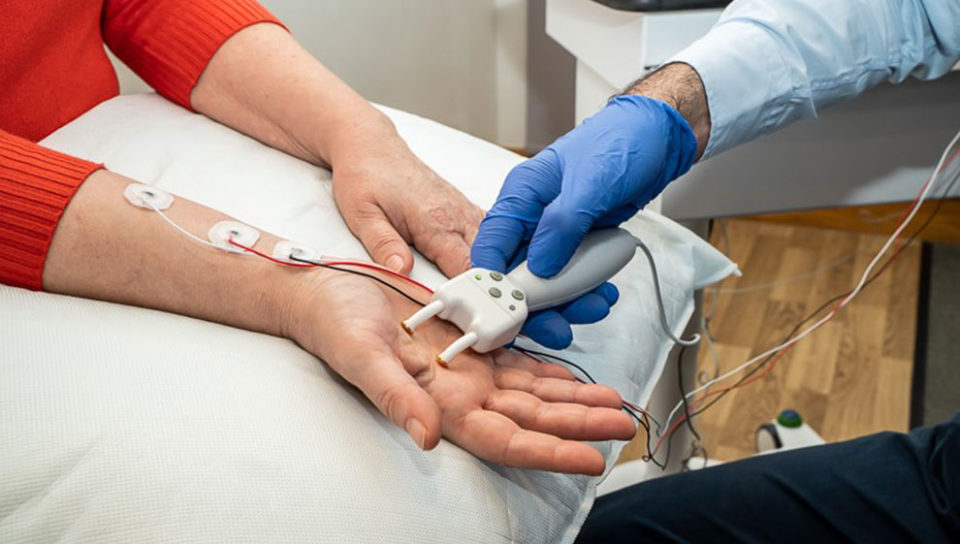Electromyography (EMG) is a diagnostic procedure that analyzes the health of muscles and the nerve cells that govern them. During the test, your clinician inserts thin needles through the skin and into the muscles. Electrodes on the ends of the needles monitor muscle activity as you move them. Also, your provider can use EMG Germantown to diagnose injuries, muscle illness and neuromuscular diseases. After the test, you should expect to get the findings within 24 to 48 hours.
The procedure of EMG
EMG studies are often divided into two parts:
- Nerve conduction studies (NCS)
Small discs are implanted on the skin during the first stage of the test (NCS) to capture nerve function. Mild electrical stimulation is then delivered to the skin to assess the nerves’ capacity to convey the electrical impulse to the recording discs. Consider your nerves to be like electrical lines. A broken cable will prohibit energy from flowing through it and powering the connected devices (such as your TV) to which it is connected. Similarly, injured nerves will prevent electrical impulses from passing through and being recorded by the discs connected to your skin.
- Needle electrode examination (NEE)
During the second portion of the test (NEE), a small needle is inserted into muscles to examine their function and health. When the needle is inserted into your muscle, it may cause a minor pin prick feeling. During this stage of the test, no electrical stimulation is administered through the needle, and no fluid is injected through the needle tip. Consider the needle to be comparable to a microphone. It is simply a recording device. The needle is connected to a computer through a wire, allowing your doctor to both hear and see what your muscle is doing at rest and during movement.
Preparing for an electromyography
Make sure your specialist is aware of any over-the-counter or prescription drugs you are taking. Also, it is particularly critical to inform your doctor if you have a bleeding disease, a pacemaker, or an implanted defibrillator. If you have any of these medical diseases or devices, you may be unable to undergo an EMG. If you are undergoing an EMG, you should prepare by doing the following:
- Avoid smoking at least three hours before the operation.
- Bathe or shower to eliminate any oils from the skin. After washing, avoid using lotions or creams.
- Wear comfortable attire that does not hinder the region being evaluated by your doctor. You may be requested to change into a hospital gown prior to the operation.
Possible risks of electromyography (EMG)
EMG is usually considered safe. Complications are uncommon. Some patients (particularly those using blood thinners) may bleed following the test. Infections can arise when the needles pierce the skin on rare occasions.
If you exhibit symptoms of muscle illness, nerve damage, or injury, an EMG test will assist your physician in making an accurate diagnosis. It also aids your provider in treatment planning. If you are on blood thinners, inform your physician before having an EMG test. These medications may increase your chances of bleeding after the procedure. Call Sleep Services of Maryland LLC to schedule your consultation today to determine whether you are the perfect candidate for EMG procedures.

